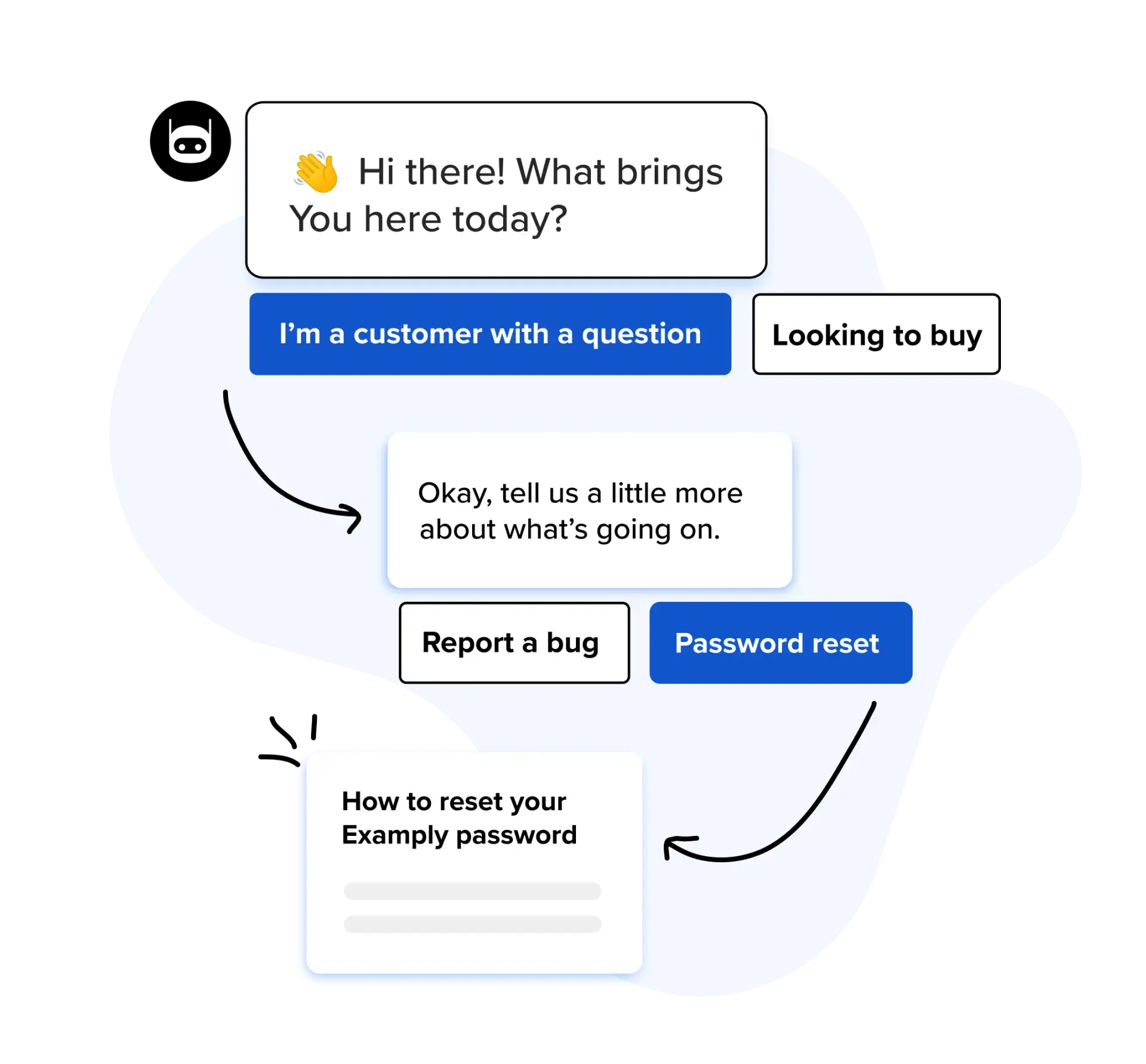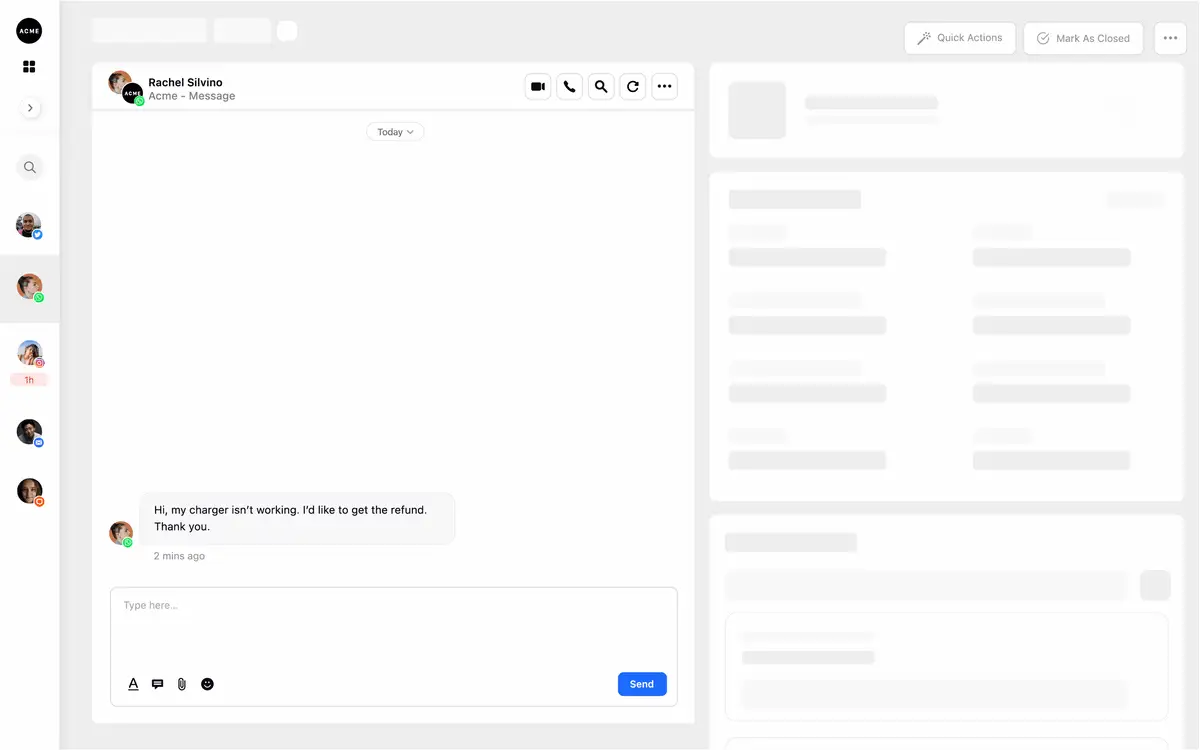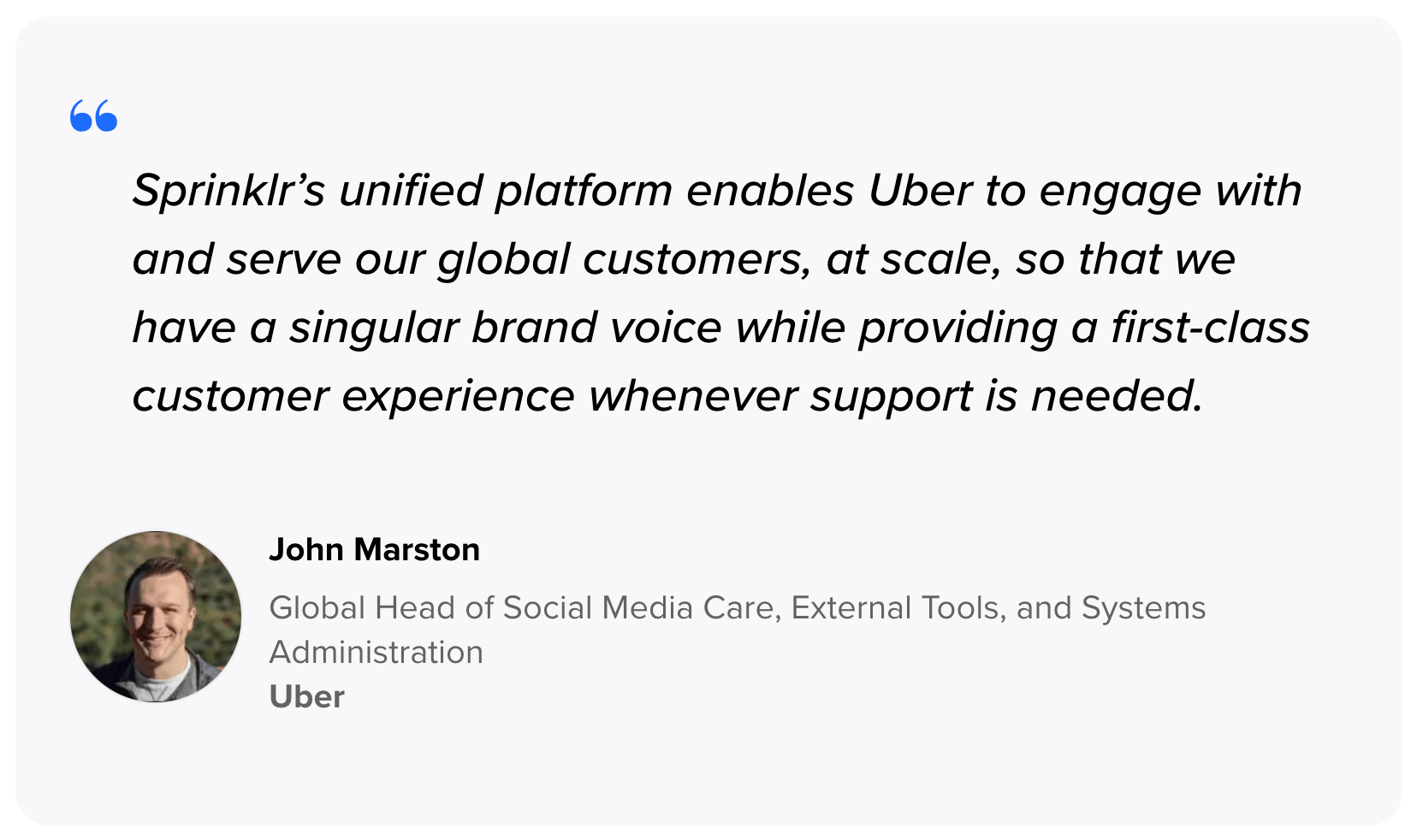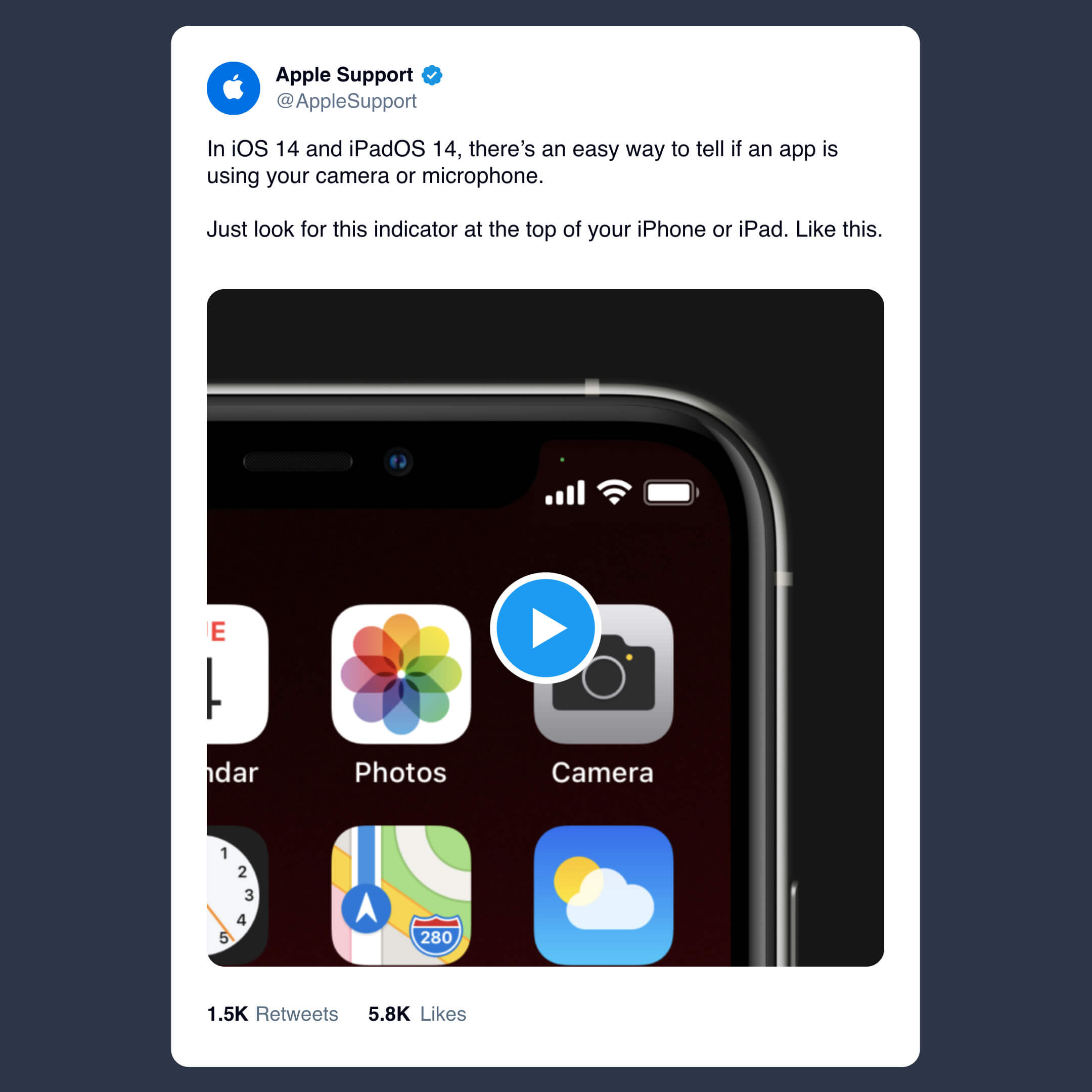What is digital customer service?
Digital customer service is the support a company provides to its customers through online channels like messaging apps, chatbots, texts (SMS), emails and social media platforms. So, while a company may still offer in-person and telephonic customer support, they may also supplement it with digital customer service for quicker resolutions and improved customer satisfaction (CSAT).
Since the number of digital customer support channels outweighs traditional channels, it has become a way to stay connected with customers 24/7 and delight them with a quick, personalized digital customer experience.
Apart from the on-demand availability of digital customer service, its accessibility is also another factor responsible for its popularity and penetration. Customers and support teams can use various mobile devices (tablets, smartphones and laptops) to access and deliver support on the fly anytime, anywhere.
What are the benefits of digital customer service?
Digital customer service offers myriad benefits to customers and brands alike. Let's discuss them in detail.
Appeal to digital-native customers
Modern customers (especially millennials and Gen-Z) spend many hours on digital channels, engaging with brands of their choice. That's why digital customer service fits the needs and expectations of digital-first customers like a glove. In fact, many discerning, click-happy customers base their purchase decisions largely on the convenience and speed of digital customer service a brand promises. In this digital world, for a brand to stay viable and competitive, digital customer support is non-negotiable.
Scalability
Digital customer support is highly flexible and scalable, which makes it a perfect choice for evolving businesses. As your customer demand grows, you can simply add more digital channels to the mix without overshooting your budget or overhauling your brick-and-mortar infrastructure. Want to cater to a new audience demographic? Amplify your reach in the social channels they favor. There's no hassle of setting up a new facility or buying additional seats in a call center.
Good to know: If scalability is a focus area for your business, consider opting for a cloud contact center to manage all your digital customer support operations and resources via the cloud. With a pay-as-you-consume model, cloud contact centers let you add more channels, regions and teams without the hassle of software/hardware updates or maintenance.
Cost-effectiveness
Additionally, digital customer service proves to be more cost-efficient, especially if it includes solid customer self-service. Enabling customers to self-seek resolutions to their issues using channels like your brand's knowledge base portal, FAQ chatbots and virtual agents is any day cheaper than customer service in a call center. Not only this, digital channels like chatbots and SMS work around the clock and give higher customer engagement and response rates than voice calls and regular mail.
Wider reach and multi-touch capabilities
Digital customer service enables customer interactions across multiple channels without missing a beat. It leads your customer from website to app to WhatsApp and beyond in a matter of minutes.
Brands with a strong omnichannel customer support strategy can leverage customer data gathered on one channel to tailor experiences across channels and stay top of mind with multiple touches. Omnipresence further enables you to get deeper insights into your audience’s needs and opinions, giving you a competitive edge over peers.
Optimal resource management
Owing to the asynchronous nature of many digital channels like emails and chatbots, your agents can handle multiple customers simultaneously. Agent intervention is required only in complex customer service scenarios with contextual agent handovers.
Digital customer service tools are typically empowered to display case history and customer behavior trends, making information readily available for your agents to respond to customers quickly and move to the next customer much faster.
Easier data management
Traditional customer service methods demanded manual data collection via forms and other error-prone documents. On the other hand, digital customer service tools are designed to gather customer data implicitly in the background and remove data duplicity and redundancy. With a digital service, you don’t need to ask the customer for the same data every time they connect with you for a resolution, paving the way for a friction-free customer experience journey.

Key components of digital customer service
In digital customer service, there's no one-size-fits-all approach for brands to follow. It can be elaborate with a mix of traditional and digital channels, or linear with just digital components. In essence, your digital support offering is largely governed by your customer demands and needs.
Nonetheless, there are a few essential components of digital customer service that brands need to prioritize. Here they are.
1. Multichannel support and experience consistency
As explained, to meet customers where they are, brands need to establish omnipresence on multiple channels like live chat, messaging apps, email and social media platforms. More importantly, the experience on all channels and touchpoints should be consistent and seamless.
2. Self-service portals
Every customer request doesn't warrant a personalized response from a live agent. Routine requests like appointment setting, order processing status updates and refunds can be resolved through self-service tools like knowledge bases, tutorials and community forums. You can deflect customers to a dynamic knowledge base of frequently asked questions, empowering them to seek information pertaining to product usage, order processing/shipping, company policies and more.
3. Chatbots and voice bots
Virtual assistants and chatbots on your website and app are a great addition to your digital offerings. They can quickly figure out the issue and direct the customer to the corresponding webpage on your website with the answer to the problem.

4. Live chat
What a virtual assistant cannot resolve, a human can. Many customers (especially aged and technologically challenged) still prefer speaking with a human as they seek answers. In addition, the human touch in customer support becomes critical in escalated high-stakes conversations that are beyond the scope of automation and artificial intelligence. Hence, a live chat support option on your website and applications is integral to your digital customer service offerings.
5. Email and messaging apps
Traditional emails, WhatsApp and text messaging apps never get old. They still form a primary touch point to raise a ticket or to deliver a resolution. From proactive outreach to timely push notifications and feedback surveys, there is an entire spectrum of customer support activities to be accomplished through messaging channels.
6. Social media engagement
Social care is an always-on channel for digital customer support and a great way to stay connected with your customers in real time. And if your customer support solution offers integrated proactive social listening, you can listen to your brand mentions and respond in time to manage customer emotions and brand reputation effectively.
Keeping tabs on your customers' social activities also gives you a sneak peek into their interests, enabling you to hyper-personalize your resolutions and support offerings.

7. Constant feedback and improvement
In order to meet customer expectations, brands with digital customer support need to establish a robust feedback and reoptimization loop. Customer surveys help you analyze customer satisfaction levels objectively and detect process gaps well in time before they lead to customer frustration and churn.
How to improve your digital customer service
Your customers want online customer service that offers easy interactions, varied channels, quick responses and empathetic agents. To become the gold standard in digital customer support, implement a few best practices and hacks and stay ahead of the game.
Tip 1: Empower your customers
Most modern customers prefer to take a stab at resolving their issues themselves before reaching out to the brand for help. That’s why a well-structured and discoverable self-service section on your website can become a gamechanger for your business.
In addition to knowledge bases, tutorials and virtual agents, customer communities are a key element of your self-support ecosystem. Build a close-knit community of your customers to broadcast messages, policy changes and time-stamped deals. It fosters exclusivity, customer loyalty and positive customer sentiment for your brand.
Tip 2: Choose your channels wisely
While your customers would prefer to have you on all the channels they frequent, be selective on the channels you invest in. Create your channel mix according to your resources, goals and customer needs.
Do you wish to reduce your ticket volume? Then, pump your resources into social channels and chatbots for agent-less resolutions.
Is brand reputation focal to your digital customer support framework? Consider venturing into review forums like G2 and TrustRadius to facilitate sentiment analysis and crisis management.
That being said, it's not a bad idea to have some sort of footprint on most of the channels your competitors leverage. For instance, uploading customer training videos on your website or YouTube, Facebook and Instagram handle and running online forums and FAQs pages keep the competition away and customers near. So whenever your customers seek an answer online, they are directed to one or the other of your pages.
Pro tip: If omnichannel customer support becomes seemingly cumbersome, think about leveraging robust AI-powered digital customer service software that helps you operate multiple channels from a single dashboard.
Tip 3: Digitize your call centers and train your agents well
For the times when your customers finally reach your contact centers, they should encounter agents who can understand their troubles. Your agents should be empathetic and have the soft skills to manage customer interactions well. Just like HomeServe, the British home emergency repairs and improvements based in England.
A customer wrote to the company seeking a price reduction at the time of policy renewal. In response, a retention representative connected with the customer to learn more and discovered that the customer was about to turn a hundred years old.
Under the company’s "CustomerFirst" initiative, the representative offered the super senior citizen a free HomeServe Cover8 policy for life. She also arranged for the company’s traditional ‘Random act of kindness’ card along with a surprise Happy birthday card to be sent to the customer on his birthday.
Result?
The customer, very touched by her gesture, connected with her personally to thank her for her generosity.
Tip 4: Focus on quicker turnaround times
Customers want prompt resolutions and immediate answers to their questions, but most contact centers fail to fulfill their needs. What makes a difference is the AI-enabled assistance for your customer support team.
Here, a robust digital customer service tool can help you bridge the demand-supply gap by integrating conversations occurring on multiple siloed channels to give your customer support teams a 360-degree view and plenty of AI-led productivity tools to shorten the response time.

Examples of digital customer service
Need some inspiration to create the perfect digital customer service plan for your company? Here are two of the most inspiring companies doing it right.
Uber — Differentiated digital customer service with industry-leading response times
Uber has always stood out for its customer-centricity and responsiveness. In 2020, when the pandemic forced travelers to stay indoors, Uber used the downtime to transform its customer support strategy across 15+ social channels and set up a rapid response team to listen in to safety alerts from globetrotters using its service.
Using Sprinklr Service, Uber ramped up 1000 customer support agents to harness the power of Sprinkr's 9-layered AI engine to filter engageable messages from noise on social media platforms and route urgent messages to appropriate teams for delivering quick, personalized responses at scale with a human touch.

Apple — Exemplary proactive and reactive social customer support
Apple has always been a front-runner in the customer support space and this time is no exception. Ssuper active on Twitter, Apple keeps its community of loyal fans and customers engaged by uploading short directive videos and answering queries almost on a daily basis.

It also runs a personalized platform where customers can see every Apple product they ever bought and seek support. That’s why it boasts one of the industry's highest net promoter score (NPS) and practically a cult following for its products and services.
Accelerate your digital customer service journey with omnichannel, AI-powered software
The COVID-19 pandemic was a turning point for companies and how they view customer support. Savvy, progressive brands took the adversity as an opportunity to rethink their customer support offerings and double down on the digital channels out there. Many of them increased their spending on digital customer experience in an effort to delight their customers with matchless experiences that drive loyalty and customer retention.
That’s where an AI-led omnichannel customer support solution like Sprinklr Service can ease the transition from offline to online and give you a winning headstart.
But how does that happen?
With a nine-layered AI engine that is purpose-built for the modern enterprise, Sprinklr collates all your customer interactions across 30+ modern and traditional channels into one centralized dashboard. The AI processes all the customer data, enabling you to craft personalized support experiences that stick around in your customers' minds for eternity.
To explore Sprinklr for your business use cases, request a free demo now.
Frequently Asked Questions
Customers prefer digital self-service over customer service. The bigger the customer base, the more critical it is to switch to digital offerings. While you can switch, digital customer servicing is limited to text messaging, WhatsApp chats or emails for a company with a low digital presence.
Thank you for contacting us.
A Sprinklr representative will be in touch with you shortly.
Contact us today, and we'll create a customized proposal that addresses your unique business needs.
Request a Demo
Welcome Back,
No need to fill out any forms — you're all set.


